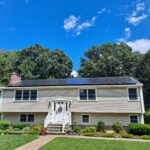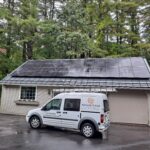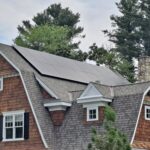1. Maintenance
Most solar electric systems have no moving parts to wear out or break down over time and require very little maintenance. The solar modules on your roof are very tough – they’re designed to withstand the elements, including intense summer heat, freezing winters, rain, and even hailstones of a certain size. Most modules are warranted for 25 years, and should last 30 years or more with very little degradation in power output.
Dust and other debris settling on the modules will decrease their efficiency and power output. In most locations, rains are frequent and heavy enough to provide adequate washing. If rain isn’t coming often enough to keep them clean, or if bird droppings become a problem, modules can be washed down with a garden hose early in the morning or late at night. (It’s not a good idea to do this during the day, because the shock of cold water on a module heated from the sun could cause it to crack.)
So that’s about it. A well-designed and professionally installed system should just sit there, producing electricity every time the sun shines, without any worries or much maintenance at all!
2. Monitoring
After a new solar array is installed and inspected, it gets to work immediately producing clean and cheap electricity at your home or business. You will want to make sure that you’re getting what you paid for – the system should be producing similar numbers to what the installer estimated.
During the proposal and contracting phase, your solar contractor will design a system for you, and give you an estimate of what you should expect the system to produce each month, year, or even over its lifetime. Installers should do their best to estimate this production based on the system’s size, components, and your local available sunlight.
There are a few ways to sanity check the system’s production. The simplest test is to look at your electric bills – is your net demand from the utility company lower than it was a year ago? This isn’t always a simple test, since changes in your behavior, the number of people in your home, or the appliances you use could change your demand. Still, you should be moving in the right direction now, and if your bill hasn’t decreased as much as you think it should’ve, it’s worth a phone call to your installer.
A better test ignores your consumption of electricity and just looks at the system output. Most inverters have small LCD screens which monitor and display different system metrics, such as instantaneous or cumulative kilowatt hours of production. You can walk up to the inverter and scroll through these metrics to make sure they jive with your expectations.
Many systems have integrated data communication systems that interface with a computer in your home or even the web, so they can be remotely monitored. Many companies are offering very slick tools to track and analyze both your array’s production and the demand of your home or business. This is the best method of monitoring.
3. Inverter replacement
The inverter is the device which converts the DC produced by a solar array to AC which you can use and sell back to the utility. The inverter is the workhorse of a solar system. The modules on the roof, wiring, and other system components should last 25 years or so, but inverters do need to be replaced every 10-15 years. The good news is that replacing an inverter is a very quick job for a solar professional, and by the time your first one needs replacing, the new ones on the market will be cheaper and better.








Pingback: Tweets that mention 3 Things to Do After Your PV System is Installed — BRIGHTSTAR SOLAR -- Topsy.com